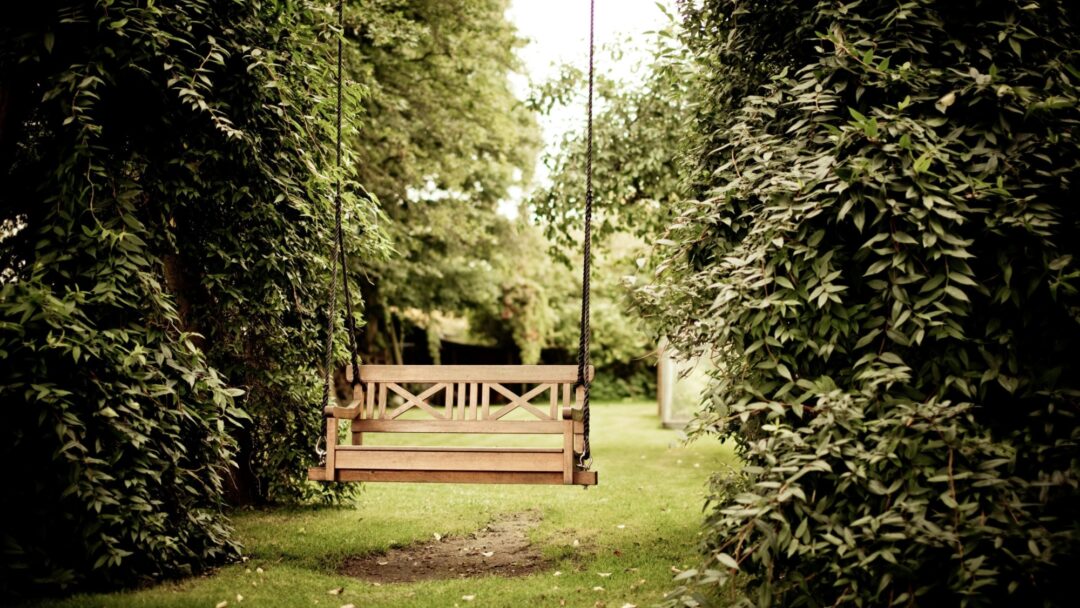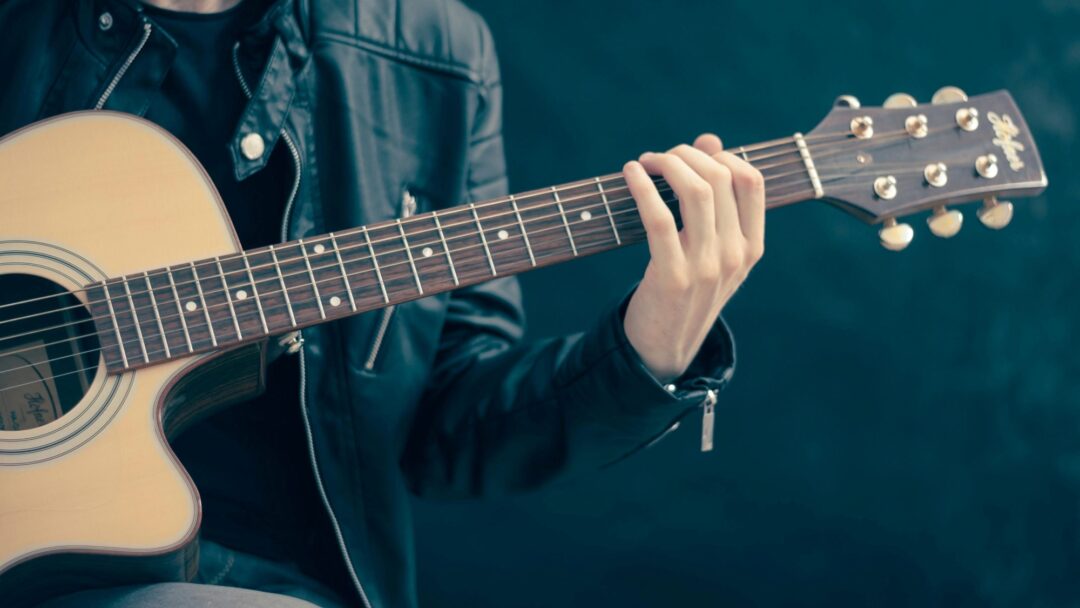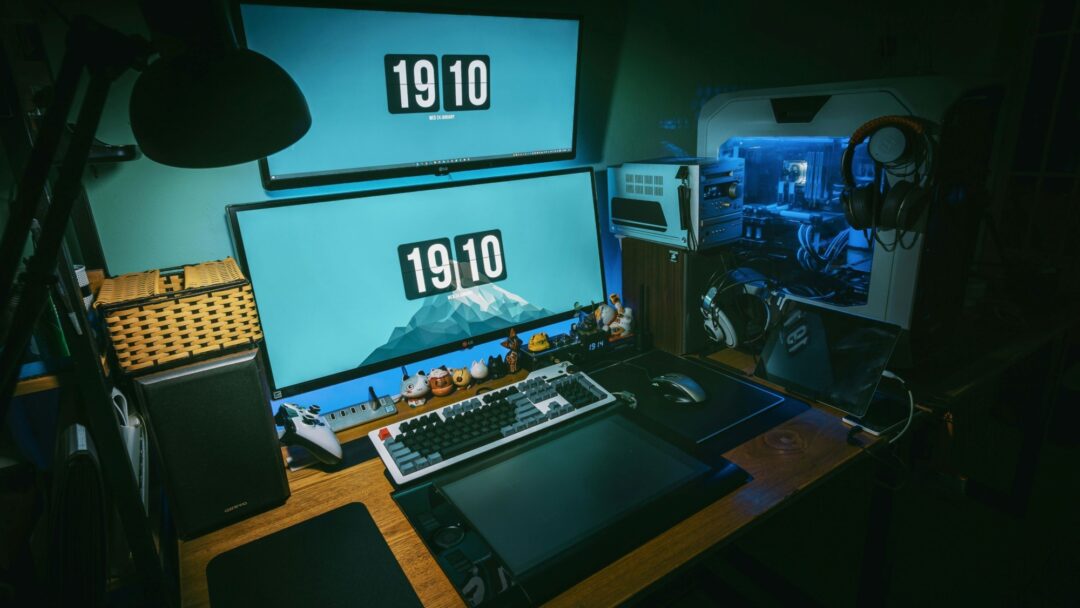Audio
Peter Rickards - Sensaball
Ablequest by
2RPH3 seasons
15 November 2024
13 mins
An inventor discusses his an innovative cane tip to help people with blindness or low vision.

From Sydney's radio reading station 2RPH, Ablequest is a series of 15 minute programs which examine developments in assistive technology and initiatives for people living with a wide range of disabilities.
The series is presented by Barbara Sullivan, Marni Roper and Elaine Wziontek.
In this episode: Peter Rickards, with help from his industrial designer son Rohan, invented a revolutionary, multi-directional white cane tip called Sensaball. This vastly improves mobility and safety for people with low or no vision. Marni Roper speaks to Peter to learn more.
Program ID 00:01
With information on the latest developments in assistive technology and initiatives, from the studios of 2RPH in Sydney and around the country on the Radio Reading Network of Australia, we bring you AbleQuest.
Barbara Sullivan 00:19
Hello I'm Barbara Sullivan. The White Cane was developed in the 1920s by Englishman James Briggs to make it safer to cross the road. Various tips have been invented during the intervening years, but they only roll left and right. This means they can wear out quickly over time when moving forward. The White Cane has always been a wonderful tool for people who have low vision or are blind but it's also a symbol of confidence and independence.
Our guest today, Peter Rickards, decided after a not totally successful lesson using the White Cane that it could be improved. So, along with help from his son Rowan, an industrial designer, he has invented Sensaball, a revolutionary multi-directional cane tip. They're in the midst of a Kickstarter campaign and are about to launch Sensible to the market. Marni Roper spoke to Peter to learn more.
Marni Roper 01:24
Welcome Peter to Ablequest. You are now blind and have had low vision since birth.Tell us about the progression.
Peter Rickards
Well, I had low vision all my life, but as I get older, of course, the remaining vision has deteriorated to the point where I needed to start using a white mobility cane about five years ago and that's how this whole project started.
Marni 01:40
But let's go back a little bit. This low vision led you to be a valuable contributor to the disability sector, especially for 26 years at Vision Australia. What was your role there? I always coordinated with Sport and Recreation for people with vision impairment and that involved mainly setting up sporting and recreation groups.
Peter 02:01
This is blind golf and golf ball and athletics and all those things. And that was part of my job. Plus all the resources I had to put together such as books and videos and things as a way of training people in our various centres around the state and overseas on how to do things for people's vision loss of any age, from children up to people in their homes. That's what my job was.
Marni
Oh brilliant. We've at one point did an interview about the blind games. Did you have anything to do with those?
Peter
Absolutely. The first job I had actually was to get a team ready for the first big games in Sydney in 1977, believe it or not, because there were no structures there and there were no federations or sporting organisations. Organising all that sort of things, like the uniforms and transport and everything like that. So that was my first job when I started, actually.
Marni
And you're a notable sportsman in your own right - I believe as a winter Paralympian...
Peter 02:58
I was part of the first Australian team to the Winter Paralympics in 1980. There were two of us, me doing cross-country skiing in the Vision and Ped. When I came back, I was involved in setting up the Disabled Skiers Association, which is now the Disabled Winter Sports Australia.
Marni 03:16
Did you just compete in the one event?
Peter
I did two races. One was 10 kilometres and one was 20 kilometres. In fact, I was so cold over there, it was minus 26 degrees on the two days in my races, believe it or not. I was absolutely freezing. When it was so cold, I really was quite dangerous to race because you had to go down. When you started the race, it was actually colder further down because your skier crosses lake, which is frozen and snow was so cold, your skiers wouldn't glide, actually. It was like running on sand.
Marni
Well, what an experience for you, though. Now, before we get into your innovative invention, can you fill us in on the history of the white cane? It's got quite an interesting history.
Peter 03:59
Yes, it has. I went back to about 1921, I think was the first recorded instance of someone using a white cane, a fellow by the name of Biggs, I think, who lived in Bristol in England, who realised that by painting a piece of wood or cane white, he could cross the road more safely than if it wasn't painted coloured white. I think from then on, the Lions Clubs in America took on the idea of promoting white canes for people who were vision impaired and blind. And then I think in 1964, I think the US government declared White Cane Safety Day on the 15th of October.
Marni 04:39
Because it's not just something that helps you find your way. It's not just a tool, is it? I know, because. it's part of safety and it's also independence because without the white cane, I've found this myself now, you can't really go out safely without either with somebody as a guide or you've got your white cane, you can find hazards and you can follow here, do a pavement and things like that. If you've got the right tip on the cane, of course, this is what we're all about here. And I've read that there's 500,000 Australians blind or with low vision. That's an awful lot of canes in use, isn't it?
And then, of course, they've got the rest of the world. Not all of them would use a white mobility cane. I think some of them might use just an ordinary walking stick. And of course, as people get older, vision loss becomes more prevalent. A lot of people find that they can't manage perhaps with just getting around without a white cane to help them in those ways. And your first lesson with your white cane wasn't totally successful, and that set you on a mission to improve it, and you've done this with your son, Rowan.
Peter 05:51
Exactly. What happened was five years ago, the first day I was out doing a lesson with a mobility instructor. I was walking around the block near home and caught the tip of the cane on a raised piece of the pavement. The cane jabbed me in the stomach and I actually bent the cane. It was so painful, I thought, it isn't really ideal. And I asked the trainer if there were any other tips which didn't just go left and right. Most of the tips are only small or when you go left and right. So when you go forward, they drag on the ground and wear out and friction on the ground. So I thought, perhaps there's a better way of doing it.
So I went to Rowan who's done industrial design training at Swindburne and said, how about we take this on as a project to try and come up with a multi-directional, frictionless, constant content tip that can be much safer and more user-friendly to people. One of the things that happens is that people get a lot of RSI, you see, from using canes over many years by having the jolting coming up the arms and so forth. And it's one of the considerations that we're trying to help alleviate.
Marni 07:00
This is the Sensaball that you've named it. Just describe what it looks like.
Peter
It's a bit like a microphone. So say if you, you know, a microphone has got a ball tip on the end and tape is down. If you hold it, you came upside down with the sensor ball on the end, people say, Oh, what's that microphone you've got in your tip? But the ball actually goes in both directions. It's got four bearings as opposed to one bearing going left and right. That means that it's smooth and it's because of the bearings that doesn't wear out like other tips can make it lighter.
And so it's about the same weight as a solid ball tip. It's weird to wear down and have no time to appoint. Actually, I had one fellow the other day. he was walking around the block and we said, so what's happened here is the tip on your cane, if it's all worn completely down to nothing.
Marni 07:47
Let's discuss some of its other features. Does it fit on all white canes?
Peter
Yes, one of the jobs we had in trying to refine this project was to have fit on as many canes as possible. Things have only come across one cane. It won't fit, it's got a funny tip on the end, but most canes it'll fit by, it's got an adaptable glue mechanism which fits a range of cane diameters from say three, nine to 13 mil. And he came within that range, it'll fit easily. And canes it outside that range called hook canes would have a tip that's attached by a flexible cord in the middle, a little adaptor called a sensible hook adaptor which goes on the end, which you can fit it onto that like a pencil tip.
Marni 08:30
So it's easy to fit.
Peter
Yeah, absolutely.
Marni
And does it roll easily over any surfaces?
Peter
Pretty much any surface that'll roll easily over. There's grass, gravel, and the best thing of all is that it's very much safer going down stairs or paths that say a bit uneven because you can feel the edge of the steps. The other thing is when I'm walking with a sighted guide, I just have to let it run in front of my feet and it means that she doesn't have to describe to me if I'm coming to a gutter or something, I can feel all that with the tip of the cane. Another thing is that people call a shore lining, which is following the edge of something, say a footpath or something, you can make this follow the edge of the footpath without it catching on anything. Means you can keep in the middle of a footpath much easier than if you've got, say, another type of tip.
Marni
I've watched a video on your website and it literally follows the step and rolls down the downward wall and then along the horizontal bit, doesn't it?
Peter 09:30
Exactly. So it means when you come to steps, you can just run it down the steps, dong, dong, dong, dong, and then you feel exactly where the edge of each step is and step down safely. And that's a big advantage or on the escalators as well. You can just hold it on the step on the escalator. If the bottom end will just run off the escalator and you know when you're at the end, you see? Yes. All those things are very helpful.
Marni
And when you're going up the stairs, you hold it upright, don't you?
Peter 09:58
What I do is I hold the cane up by and it just taps on each step as you go up. And when you come to, you've got a big stairway, so the railway station, every few steps, you have a little rest bit or the wider step. You run it across there and then you know when the next step starts. So it's very handy for going up steps as well.
Marni
And what about obstacles like grates and grills and dips in the footpath? How does it manage?
Peter 10:21
Well, it doesn't catch on those things like other cane tips do, but because it's got a bit of an echolocation feature, still you can hear the different obstacles such as a grate or whatever. So you run the tips across the grills. And you can hear that it is metal rather than just your normal pavement or bitumen road or bricks or whatever you can feel. Different types of surfaces with the cane quite easily and the noise makes also will reflect the type of surface you're going across as well as feeling it through the cane itself.
Marni 10:54
And what about indoors with mats and rugs?
Peter
A lot of other canes are very noisy indoors and they crash on things, but this one as well suited to indoors, even wooden floors it goes across. Also, a lot of other tips may make a lot more noise in this one in indoor situations as well.
Marni 11:15
As you use it yourself, is it safer?
Peter
Much safer - because if you're going along and you're tapping left and right, the piece in the middle of the footpath is un-surveyed, I suppose, so you didn't know you haven't actually surveyed the whole area you're going to be walking on, whereas the Sensaball, [?if you... you're left and right, you keep it on the ground the whole time, so every piece of pavement or walking area you're going to walk across, you've surveyed, I suppose, with the tip. So that means, in fact, that it's much safer. You know exactly where you're walking and what's ahead of you, rather than just taking a chance and tapping, you know, left and right, or most people do normal tips because they don't want to get caught on things as much.
Marni 12:00
And you just launched a Kickstarter campaign, and how's that gone?
Peter
Oh, about halfway there. We've got a little bit of opportunity for people to support us, and they can do that in three ways. One is they can pre-order a Sensaball for themselves at a discount rate, or they can put an equivalent amount... we've got a number of charities around the world which need these devices to help train people with different vision loss than Africa and South America and Asia and so forth, or they can just make a donation to help us keep the cost down and sufficiently so that when the people buy them in the end of the day, it's going to be as cheap as possible.
There's a huge cost in the tooling for setting this manufacturing up and if we can help defray that cost a bit, it'll be cheaper to people at the end of the day. They do last also a lot longer than other tips, so even though the cost may be a bit more expensive, it's going to last a lot longer. We've got one person who's been using one for three years and one of our earlier prototypes are still going strong. I'll tell you a website so people can get involved if they would like to. Yes, please.
Marni 13:10
www.sensorball, s-e-n-s-a-b-a-l-l dot com dot a-u ... Peter, we wish you all the best with this, and I think it's a marvelous invention. The video hasn't been done earlier. I've just been speaking with Peter Rickards, who along with his son Rowan, is the inventor of Sensaball, an adaption for the white cane.
Barbara 13:38
You have just been listening to Ablequest, a program that looks at developments in assistive technology and initiatives. From Barbara Sullivan and Marni Roper, thank you for listening, and goodbye till next program.
ID 13:51
Thanks for watching...
Continue listening

Blind Sports Australia CEO Matt Clayton speaks about its work with blind and vision impaired athletes across 21 sports.
Matt Clayton - Blind Sports Australia
Ablequest by 2RPH
5/5/2023
•13 mins
Audio

Vivid, Sydney's celebration of creativity, seen from a disability access focus by its director.
Gill Minervini - Vivid
Ablequest by 2RPH
19/5/2023
•14 mins
Audio

This program discusses dance movement therapy and how it works - featuring Cecilia King of the Dance Therapy Association.
Cecilia King - Dance Therapy
Ablequest by 2RPH
14 mins
Audio

What are the challenges of providing audio description on Oz TV? Hear Lauren Henley, Aust Federation of Disability Organisations.
Lauren Henley - Audio Description
Ablequest by 2RPH
16/6/2023
•14 mins
Audio

In Part 1 of a 2RPH interview, assistive tech expert David Woodbridge explores latest innovations to make everyday life easier.
David Woodbridge - Tech Update Part 1
Ablequest by 2RPH
30/6/2023
•14 mins
Audio

Features Robert Duff-Silsby of Luddi, Perth company developing assistive devices for all people and bodies.
Robert Duff-Silsby - Sexual Wellbeing
Ablequest by 2RPH
13 mins
Audio

In Part 2 of this conversation with 2RPH's Ablequest, expert David Woodbridge reviews latest assistive technologies.
David Woodbridge - Tech Update Part 2
Ablequest by 2RPH
28/7/2023
•14 mins
Audio

Matt Clayton of Blind Sports Australia and the Oz team's Chef de Mission, discusses the forthcoming World Blind Games in the UK.
Matt Clayton - World Blind Games
Ablequest by 2RPH
11/8/2023
•13 mins
Audio

Prof Kim Marriott of the Monash Assistive Technology and Society Centre, talks about the purpose and work of the Centre.
Kim Marriott - Monash Assistive Technology and Society Centre
Ablequest by 2RPH
25/8/2023
•13 mins
Audio

Ablequest features an interview with Serena Ovens, new CEO of Assistive Technology Supplies Australia or "ATSA".
Serena Ovens - Assistive Technology Supplies Australia
Ablequest by 2RPH
14 mins
Audio

Part 1 of an interview on the voice-activated app, Bindi Maps.
Anna Wright - Bindi Maps (Part 1)
Ablequest by 2RPH
14 mins
Audio

This is Part 2 of an interview with Dr Anna Wright, explaining how Bindi Maps works.
Anna Wright - Bindi Maps (Part 2)
Ablequest by 2RPH
14 mins
Audio

Artist Ebony Wightman of disability-led We Are Studios talks about art and challenge.
Ebony Wightman - We Are Studios
Ablequest by 2RPH
20/10/2023
•13 mins
Audio

Prof. Leeanne Carey discusses the SENSe program, her team's world-first therapy to help stroke survivors.
Leeanne Carey - SENSe Therapy
Ablequest by 2RPH
2/11/2023
•13 mins
Audio

Youthworks Accessibility Minister Bec Baines talks of making church accessible to young people with disabilities.
Bec Baines - Youth and Worship
Ablequest by 2RPH
16/11/2023
•14 mins
Audio

Nikki Hind, Australia's first blind fashion designer, discusses her work.
Nikki Hind: Blind Grit
Ablequest by 2RPH
1 December 2023
•14 mins
Audio

Dr Dimity Williams, family GP, recommends spending more time in nature - and a "green hour" each day.
Green Hour: Dr Dimity Williams
Ablequest by 2RPH
5 December 2023
•14 mins
Audio

Imagine sitting in a wheelchair for hours, being unable to move your fingers or arm to do simple things like pick up a glass.
Konstanze Hager - Bateo
Ablequest by 2RPH
Konstanze Hager - Bateo
•14 mins
Audio

Action Audio is a new language being created to transcend sport.
Machar Reid - Action Audio
Ablequest by 2RPH
Machar Reid - Action Audio
•14 mins
Audio

What a difference one person with experience, passion and energy can make to many lives.
Julie Ross-Edwards - Head High
Ablequest by 2RPH
Julie Ross-Edwards - Head High
•14 mins
Audio

Driver educator outlines what's needed for a person with disability to get a driver's licence.
Ronak Shah: on-road driving education
Ablequest by 2RPH
12 January 2024
•14 mins
Audio

Vision Australia's Christo Sarantakis talks of his life, blindness and assistive tech changes.
Christo Sarantakis of Vision Australia
Ablequest by 2RPH
26 January 2024
•14 mins
Audio

Introducing Australia's first pictureless feature film, TOUCH, showing in Sydney.
Majella Knobel: "Touch" - open air movie
Ablequest by 2RPH
9 February 2024
•14 mins
Audio

An expert discusses the use of horticultural therapy for people with disabilities.
Steven Wells: horticultural therapy
Ablequest by 2RPH
23 February 2024
•14 mins
Audio

Features articles on latest blind-assistive tech including a new bus app and smart ear buds.
Assistive tech news catchup
Ablequest by 2RPH
8 March 2024
•14 mins
Audio

Features an innovative hospitality industry training program for people with disabilities.
Saraya O'Connell - Hotel Etico Independence Program
Ablequest by 2RPH
22 March 2024
•14 mins
Audio

Guests discuss the Obi robotic dining assistant for people with upper arm disabilities.
Hugh Kingley and Rachel Dekkar: Obi
Ablequest by 2RPH
19 April 2024
•14 mins
Audio

A spy-themed computer program tackles the mystery of social encounters - outlined by its company's CEO.
Kathleen Davey - Social Science Translated
Ablequest by 2RPH
3 May 2024
•14 mins
Audio

A Sydney organisation delivers creative arts and life skills to people with disabilities.
ChoppA Green - Studio Artes
Ablequest by 2RPH
17 May 2024
•14 mins
Audio

An award-winning Central Coast NSW disability service shares its successful strategies.
Lonestar Makoni - Breaking Barriers Disability Services
Ablequest by 2RPH
31 May 2024
•14 mins
Audio

Part 1 of a conversation with an Australian neuroscience research pioneer about benefits of music in brain injury recovery.
Professor Sarah Wilson (part 1)
Ablequest by 2RPH
14 June 2024
•14 mins
Audio

Part 2 of a conversation with a leading neuroscientist of benefits of music in brain injury recovery.
Professor Sarah Wilson (part 2)
Ablequest by 2RPH
28 June 2024
•14 mins
Audio

A CEO talks about his company's award-winning assistive physical therapy device.
Justin Keenan - LusioMate
Ablequest by 2RPH
12 July 2024
•14 mins
Audio

Information about a program teaching good cyber-security practices to make daily life safer.
Jess Wilson: Be Connected
Ablequest by 2RPH
26 July 2024
•14 mins
Audio

A veteran print disability broadcaster with macular degeneration shares her experiences.
Teresa Plane - 2RPH
Ablequest by 2RPH
9 August 2024
•14 mins
Audio

The founder of a blind-assistive technology company shares latest developments.
Peter Ford - Control Bionics (part 1)
Ablequest by 2RPH
6 September 2024
•14 mins
Audio

Part 2 of an interview with the head of an innovative blind-assistive technology company.
Peter Ford - Control Bionics (part 2)
Ablequest by 2RPH
20 September 2024
•13 mins
Audio

Looks at a project to better inform refugee and migrant women on AI.
Good Things - Jess Wilson
Ablequest by 2RPH
4 October 2024
•14 mins
Audio

An expert with lived experience corrects some widespread misconceptions about stuttering.
Dale Williams - Stuttering Awareness Day
Ablequest by 2RPH
18 October 2024
•14 mins
Audio

An inventor discusses his an innovative cane tip to help people with blindness or low vision.
Peter Rickards - Sensaball
Ablequest by 2RPH
15 November 2024
•13 mins
Audio

Part 1 of an interview with an Australian expert on low-vision-assistive technology, on AI and other developments.
David Woodbridge (part 1)
Ablequest by 2RPH
29/11/2024
•14 mins
Audio

Conclusion of an interview with a leading Australian expert on blind-assistive technology.
David Woodbridge (part 2)
Ablequest by 2RPH
13 December 2024
•14 mins
Audio

Looks at the leading stroke treatment work of the Royal Rehabilitation Hospital, Ryde NSW.
Jason Redhead and Graham Cooper of Royal Rehab Ryde
Ablequest by 2RPH
10 January 2025
•14 mins
Audio

An innovative social media platform aims to address isolation and loneliness in the disability community.
Steve Bear - Alvie
Ablequest by 2RPH
7 February 2025
•12 mins
Audio

Australia's largest provider of Auslan sign services outlines its important work.
Brett Casey - Deaf Connect
Ablequest by 2RPH
21 February 2025
•14 mins
Audio

Looks at an Australian organisation's work at helping men seek help and build self-awareness.
Tommy Herschell - Find Ya Feet
Ablequest by 2RPH
7 March 2025
•14 mins
Audio

A speech pathoplogist discusses her work with young people's complex communication needs.
Denise West - Scope
Ablequest by 2RPH
21 March 2025
•14 mins
Audio

A vision-impaired disability rights advocate talks of her work and learning podcast skills.
Freya Wolf
Ablequest by 2RPH
4 April 2025
•14 mins
Audio

A leading Australian eye researcher talks of his team's work in creating new hope for people with retinal damage.
Raymond Wong - Centre for Eye Research Australia
Ablequest by 2RPH
18 April 2025
•14 mins
Audio

A wheelchair-using business owner, facilitator and car rally driver shares experiences and insights.
Mel Harrison - Sitting Low, Reaching High
Ablequest by 2RPH
2 May 2025
•13 mins
Audio

Disability Pride Month in July promotes awareness about people with disability and also celebrates individuals with disability.
Hannah Solomons - Sydney Disability Pride
Ablequest by 2RPH
Hannah Solomons - Sydney Disability Pride
•14 mins
Audio

Deb Roach is a three-time pole dancing world champion yet she has only one arm.
Deb Roach
Ablequest by 2RPH
Deb Roach
•13 mins
Audio

Being in nature is good for you whether it is being in the garden or walking along the beach.
Kayte Kitchen - Admirari Nature Therapy
Ablequest by 2RPH
Kayte Kitchen - Admirari Nature Therapy
•14 mins
Audio

Music can evoke emotions that bring back memories and the same is true for people living with dementia.
Zara Thompson - Music Therapy
Ablequest by 2RPH
Zara Thompson - Music Therapy
•14 mins
Audio

Laura Boccanfuso is founder and CEO of Van Robotics, a social robotics company based in South Carolina in the United States.
Laura Boccanfuso - Van Robotics
Ablequest by 2RPH
Laura Boccanfuso - Van Robotics
•14 mins
Audio

Two years ago Maggie O'Connell, in her mid 20's never had a full time job.
Maggie O'Connell - AFP
Ablequest by 2RPH
Maggie O'Connell - AFP
•14 mins
Audio

Julie Ross-Edwards, founder of Head High Disability Services, returns to Ablequest to speak more about Head High's philosophy and special approach.
Head High (Update)
Ablequest by 2RPH
Head High (Update)
•13 mins
Audio

David Woodbridge, an expert in assistive technology for people with no or low vision, is a regular guest on Ablequest.
David Woodbridge
Ablequest by 2RPH
David Woodbridge
•14 mins
Audio

Pete Horsley is the Founder of Remarkable, a global start up and initiative of the Cerebral Palsy Alliance.
Pete Horsley - Remarkable Disability Tech Summit
Ablequest by 2RPH
Pete Horsley - Remarkable Disability Tech Summit
•14 mins
Audio